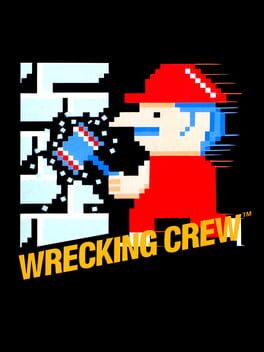subdirectory_arrow_right Mario (Franchise)
▲
1
▼
In the 2023 film "The Super Mario Bros. Movie", the Japanese name for the character Spike (the foreman from Wrecking Crew) was changed in the corresponding dub. Although no specific reason was given as to why the change was made, it can be assumed it was done to avoid controversy as the character's original Japanese name is "Blackie", which is also a derogatory racial slur in English-speaking countries used to refer to dark-skinned people of African descent.
subdirectory_arrow_right Wrecking Crew '98 (Game)
▲
1
▼
subdirectory_arrow_right Kung Fu (Game), Baseball (Game), 10-Yard Fight (Game), Hogan's Alley (Game), Golf (Game), Excitebike (Game), Wild Gunman (Game), Stack-up (Game), Gyromite (Game), Pinball (Game), Tennis (Game), Clu Clu Land (Game), Duck Hunt (Game), Ice Climber (Game), Family Computer (Platform), Nintendo Entertainment System (Platform)
▲
2
▼
Multiple early "black box" NES releases' cartridges produced during the console's US launch in Winter 1985 didn't use NES ROM chips, but rather Famicom ROM chips with a built-in converter. The 15 NES launch titles, and the only games known to have these chips, are:
•10-Yard Fight
•Baseball
•Clu Clu Land
•Duck Hunt
•Excitebike
•Golf
•Gyromite
•Hogan's Alley
•Ice Climber
•Kung Fu
•Pinball
•Stack-Up
•Tennis
•Wild Gunman
•Wrecking Crew
All of these games would eventually be reprinted with regular NES chips.
•10-Yard Fight
•Baseball
•Clu Clu Land
•Duck Hunt
•Excitebike
•Golf
•Gyromite
•Hogan's Alley
•Ice Climber
•Kung Fu
•Pinball
•Stack-Up
•Tennis
•Wild Gunman
•Wrecking Crew
All of these games would eventually be reprinted with regular NES chips.
▲
2
▼
In a 2004 interview with the magazine Nintendo Dream, designer Yoshio Sakamoto revealed that developing Wrecking Crew permanently increased the storage capacity of Famicom games. The cartridges previously had a maximum storage of 128 kilobytes (kb) of uncompressed data for programming and 64 kb of data for images and sprites in the game itself. Wrecking Crew's gameplay pushed developers towards a 256 kb capacity while still having 64 kb of image data, allowing for more complicated ideas to be explored. This increase would not be seen again until the Famicom Disk System allowed for 1 megabyte (1024 kilobytes) of storage per game.
Nintendo Dream Vol. 118 (September 2004):
https://metroiddatabase.com/old_site/m1/fds-interview-p1.php
https://metroiddatabase.com/old_site/m1/fds-interview-p1.php
Related Games
Wrecking Crew '98
Super Smash Bros. Ultimate
Game & Watch Gallery 3
Super Mario All-Stars
Super Mario 64 DS
Mario & Sonic at the London 2012 Olympic Games
Mario + Rabbids Kingdom Battle
NBA Street V3
Game & Watch: Super Mario Bros.
Mario Artist: Polygon Studio
Super Mario 3D All-Stars
Luigi's Mansion: Dark Moon
Mario Party 2
Super Mario Advance 4: Super Mario Bros. 3
Super Mario RPG: Legend of the Seven Stars
Luigi's Mansion
Mario & Sonic at the Olympic Winter Games
Dr. Mario
Super Mario Bros. 35
Mario Artist: Communication Kit
Mario Party 10
Mario & Luigi: Partners in Time
Mario Teaches Typing
Mario Bros.
Captain Rainbow
Mario Kart 8 Deluxe: Booster Course Pass
Mario Golf: Advance Tour
Mario Party: Island Tour
Mario Kart 8 Deluxe
Mario Party: Fushigi no Challenge World
Captain Toad: Treasure Tracker
Nintendo Land
Super Mario Run
Mario Kart: Super Circuit
Waluigi's Foot Fault
Donkey Kong
Mario Is Missing!
Mario Kart Arcade GP DX
Super Smash Bros. for Nintendo 3DS
Super Paper Mario
Super Mario FX
New Super Mario Bros. Mii
Yoshi's New Island
Dr. Luigi
Mario Party Advance
NES Remix
Tetris Attack
Super Smash Bros.
Mario's Game Gallery
Mario Sports Superstars


